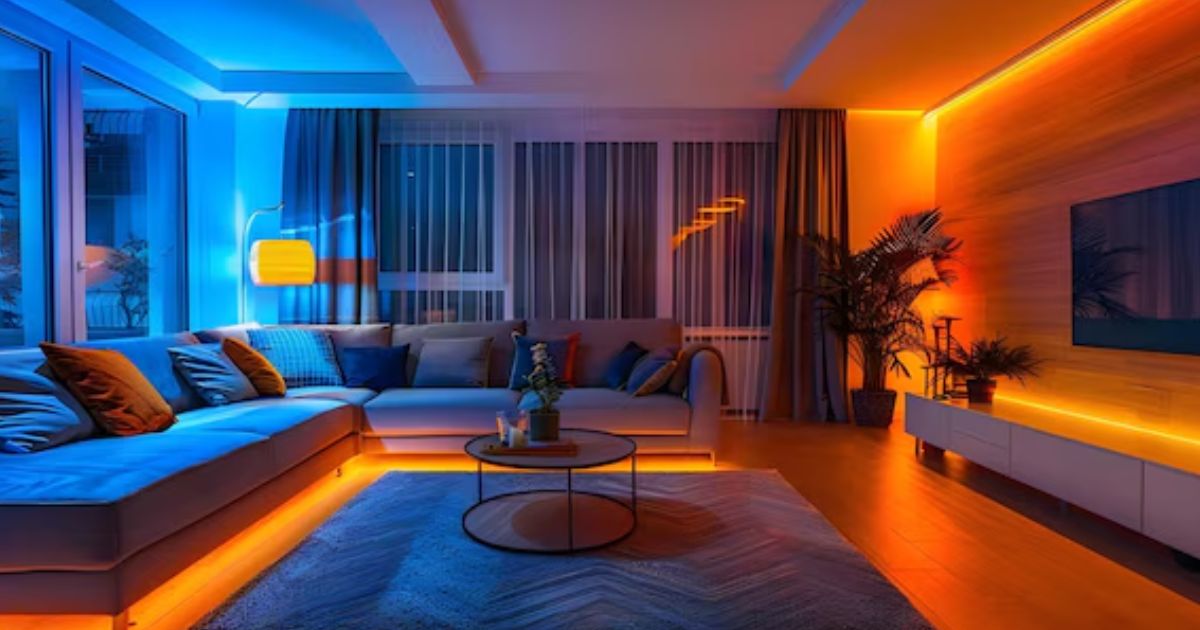Lighting plays a crucial role in defining the ambiance, functionality, and aesthetic appeal of any interior space. With advancements in technology, lighting automation has become a game-changer for homeowners and interior designers alike. Smart lighting not only adds convenience but also enhances the overall design and usability of a space. In this article, we’ll explore how lighting automation is revolutionizing interiors and why it’s an essential consideration for modern interior designers.
What is Smart Lighting?
Smart lighting refers to a system that allows users to control the lighting in their homes through various devices such as smartphones, voice assistants, or motion sensors. These systems offer features like dimming, color-changing capabilities, and scheduling, making them versatile and adaptable to various needs and moods.
Interior designers in Chennai leverage smart lighting to create dynamic spaces that respond to the occupants’ lifestyles while maintaining aesthetic harmony.
1. Enhancing Mood and Ambiance
Lighting sets the tone of a room, and with smart lighting, it’s easier than ever to create the desired ambiance. Whether it’s a cozy evening in the living room or a productive work session in the home office, smart lighting systems offer customizable settings to match any scenario.
- Color Temperature: Smart lighting allows for adjustments in color temperature, from warm yellows to cool whites, influencing mood and productivity.
- Dynamic Scenes: Pre-programmed scenes, such as “Relax” or “Party,” can transform a space with the touch of a button.
Interior designers use these features to enhance the versatility of spaces, ensuring they adapt seamlessly to different activities and times of the day.
2. Improving Energy Efficiency
Smart lighting systems are designed with energy efficiency in mind. By integrating motion sensors, timers, and dimmers, they help reduce energy consumption significantly.
- Motion Sensors: Lights automatically turn on when someone enters a room and turn off when it’s unoccupied.
- Scheduling: Pre-set schedules ensure that lights are only used when needed.
- LED Integration: Most smart lighting systems use LED bulbs, which are more energy-efficient and have a longer lifespan than traditional bulbs.
Interior designers prioritize energy-efficient solutions not only for sustainability but also to reduce utility costs for homeowners.
3. Adding Convenience and Control
Smart lighting offers unparalleled convenience by allowing users to control their lights remotely or through voice commands.
- Voice Control: Integration with assistants like Alexa, Google Assistant, or Siri enables hands-free operation.
- Remote Access: Adjust lighting from anywhere using a smartphone app, ideal for when you forget to turn off the lights.
- Custom Automation: Set lights to gradually brighten in the morning as a wake-up aid or dim at night for relaxation.
Interior designers often recommend smart lighting to tech-savvy clients who value convenience and modernity.
4. Highlighting Design Features
Smart lighting isn’t just about functionality; it’s also a powerful tool for accentuating the architectural and design elements of a space.
- Accent Lighting: Use smart spotlights or strips to highlight artwork, sculptures, or textured walls.
- Layered Lighting: Combine ambient, task, and accent lighting for a multidimensional look.
- Color Effects: RGB lighting can create dramatic effects, ideal for feature walls or entertainment areas.
Interior designers carefully plan lighting to draw attention to focal points and enhance the spatial experience.
5. Adapting to Different Lifestyles
Every homeowner has unique preferences and routines, and smart lighting adapts to cater to diverse lifestyles.
- Family-Friendly: Child-safe settings and nightlights ensure convenience for families.
- Work-from-Home: Task lighting options promote productivity in home offices.
- Entertainment: Sync lights with music or movies for an immersive experience.
Interior designers collaborate with clients to tailor lighting automation systems that align with their daily activities and personal preferences.
6. Enhancing Security
Smart lighting contributes to home security by creating the illusion of occupancy, even when the homeowner is away.
- Away Mode: Schedule lights to turn on and off at random intervals to deter potential intruders.
- Integration with Security Systems: Sync lights with cameras or alarms for added protection.
- Motion Detection: Outdoor lights activate upon detecting movement, enhancing visibility and safety.
Interior designers often incorporate smart lighting into comprehensive security plans, ensuring both safety and style.
7. Supporting Sustainability Goals
Sustainability is a growing concern for homeowners, and smart lighting systems align with eco-conscious values.
- Reduced Carbon Footprint: Lower energy consumption directly impacts greenhouse gas emissions.
- Recyclable Components: Many smart lighting products are designed with recyclable materials.
- Integration with Solar Power: Smart systems can optimize the use of renewable energy sources.
Interior designers who prioritize sustainability integrate smart lighting as part of a broader eco-friendly design strategy.
8. Creating Customizable Spaces
Smart lighting enables spaces to evolve according to the homeowner’s changing needs and preferences.
- Zonal Control: Different zones within a room can have distinct lighting settings.
- Personalization: Adjust light intensity, color, and schedules to suit individual preferences.
- Scalability: Easily expand systems to include additional rooms or features.
Interior designers value the flexibility of smart lighting, which allows them to future-proof their designs.
9. Future Trends in Smart Lighting
The field of smart lighting continues to evolve, offering new possibilities for interior designers and homeowners.
- AI Integration: Artificial intelligence will enable lighting systems to learn and adapt to user behaviors.
- Wireless Technology: Enhanced wireless connectivity will simplify installation and expand functionality.
- Human-Centric Lighting: Systems will focus on mimicking natural light patterns to promote well-being.
Interior designers stay updated on these trends to provide clients with cutting-edge solutions.
Conclusion
Lighting automation is more than just a technological upgrade; it’s a transformative element in modern interior design. Smart lighting enhances ambiance, improves functionality, and aligns with sustainability goals, making it an indispensable tool for best interior designers in Chennai. Whether it’s creating a cozy living room, a productive home office, or a secure outdoor space, smart lighting offers endless possibilities. By incorporating these systems, interior designers can elevate the aesthetic and practical value of any space, ensuring it meets the demands of today’s tech-savvy homeowners.


